Conche – The French Shore Tapestry
This is my final post from the wonderful trip that Alison and I took this past August to western Newfoundland and southeast Labrador. In the last post we had made our way to the very end of the Viking Trail to visit the recreated Viking settlement at L’Anse aux Meadows. Originally our plans were to simply retrace our steps back to Port aux Basques by way of the Viking Trail and TCH, but all that changed when I learned of the French Shore Tapestry in the small community of Conche on the remote northeastern coast of the Great Northern Peninsula. Please join us as we seek out this modern textile marvel.
Getting to Conche involves going a bit out of the way and some retracing of your route in places, but trust me it’s worth it. Heading south on the Viking Trail from St. Anthony you turn left onto Route 432 heading for what is known as the French Shore. In previous posts I explained that while France lost any territorial claim on the island of Newfoundland after 1713, it did retain the right to maintain a seasonal fishery on the west coast of the island. They exploited this right up until 1904 and it was one of the reasons that the Port au Port peninsula ended up with a largely French population. However, Port au Port was not the only area where fishermen from Brittany and Normandy set up summer quarters . On the very remote northeast coast of the Great Northern Peninsula they established the communities of Conche, Croque, Grandois and Main Brook which are collectively known as the French Shore. While the French were not allowed to remain here permanently, Irish and English settlers were and they safeguarded the French possessions while they were back in France. With the loss of fishing rights in 1904 the communities were dealt a serious blow, but they have survived and eventually all were connected to the rest of the island with a road system that did not exist until fairly recent times. Some of the communities still do not have paved roads into them.
Route 432 has a number of interesting features before you reach the turn off to Conche. If you’ve made it this far up the Great Northern Peninsula you will have noticed the presence of roadside community gardens, often in places miles away from any town or village. These are a direct product of road construction and date only from the 1960’s. As roadbeds were cleared and the peaty soil pushed to the sides it created one of the few places where vegetables could be grown with any degree of success. Route 432 has a number of good examples of these gardens where potatoes, turnips, carrots, beans and other crops are grown. They are fenced, I presume to keep the moose out.
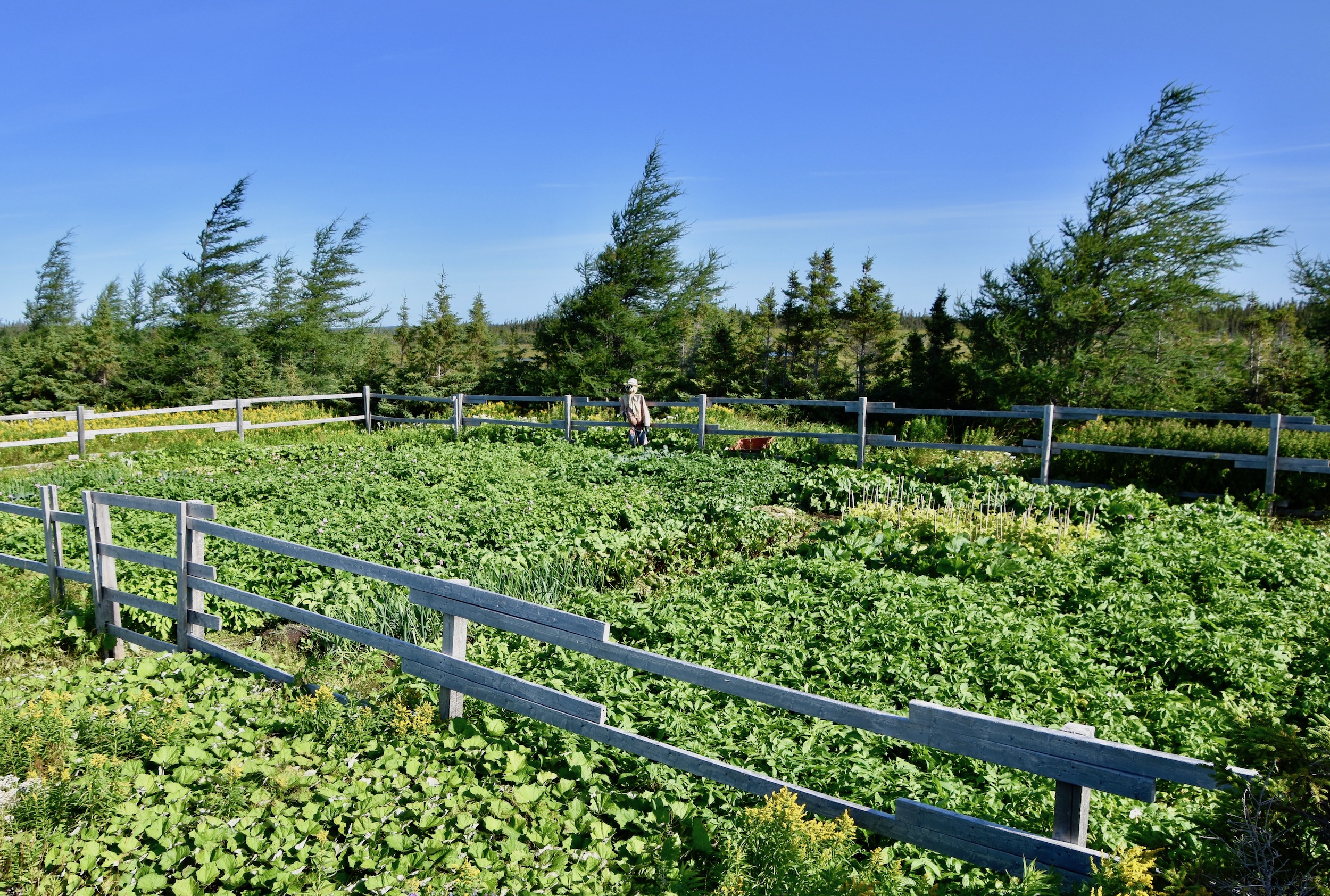
They also often have colourful scarecrows protecting them from crows, like this guy.
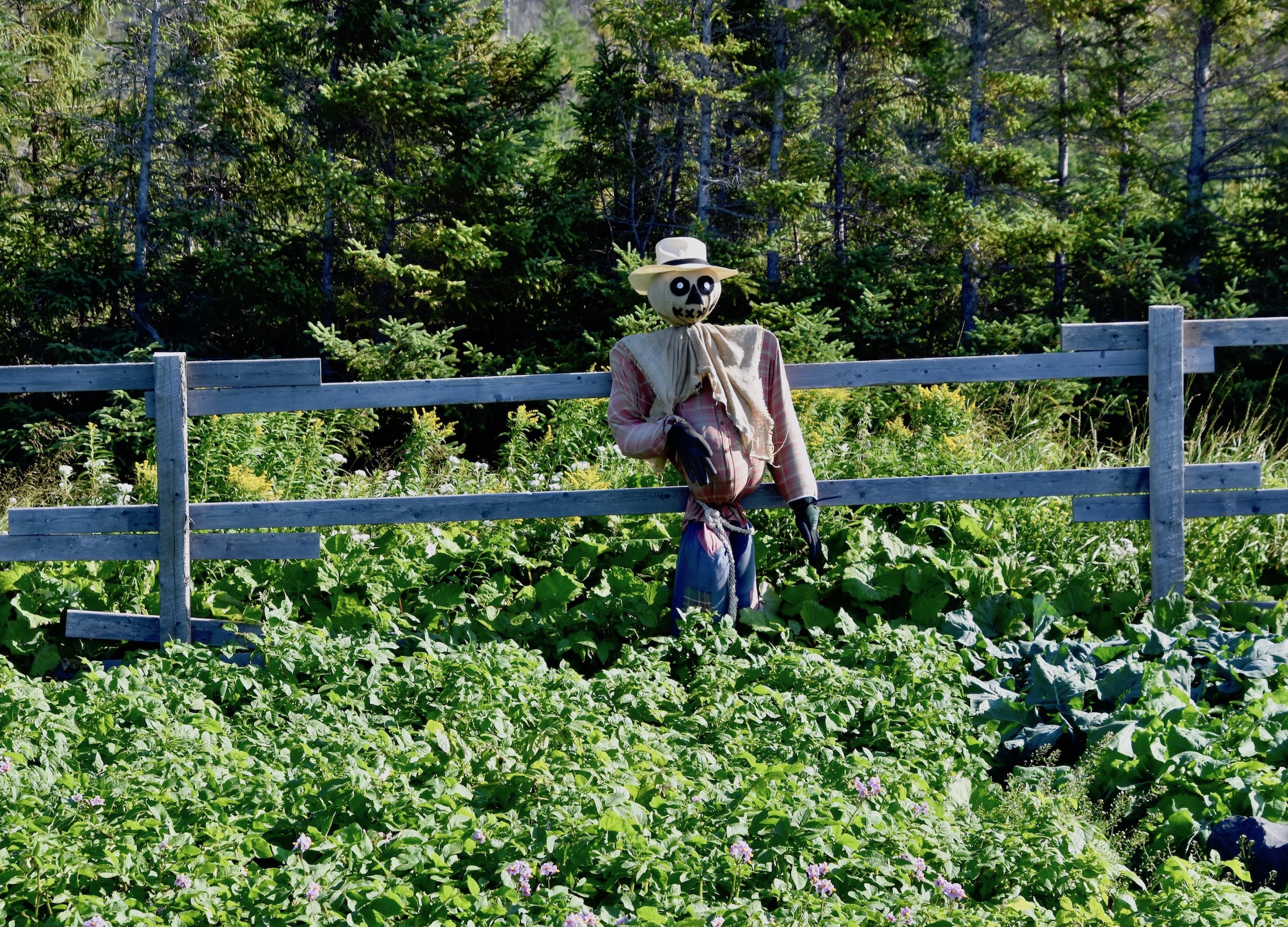
The next left turn is onto the route that heads to the fishing communities of Roddickton and Englee. Not far after making this turn there is another must see attraction, the unique Underground Salmon Pool. Once you see the sign, turn onto a dirt road that leads to a parking lot from where there is a really pretty trail over a bridge to the only known place on earth where migrating salmon enter an underground pool as Beaver Brook disappears into a cave.
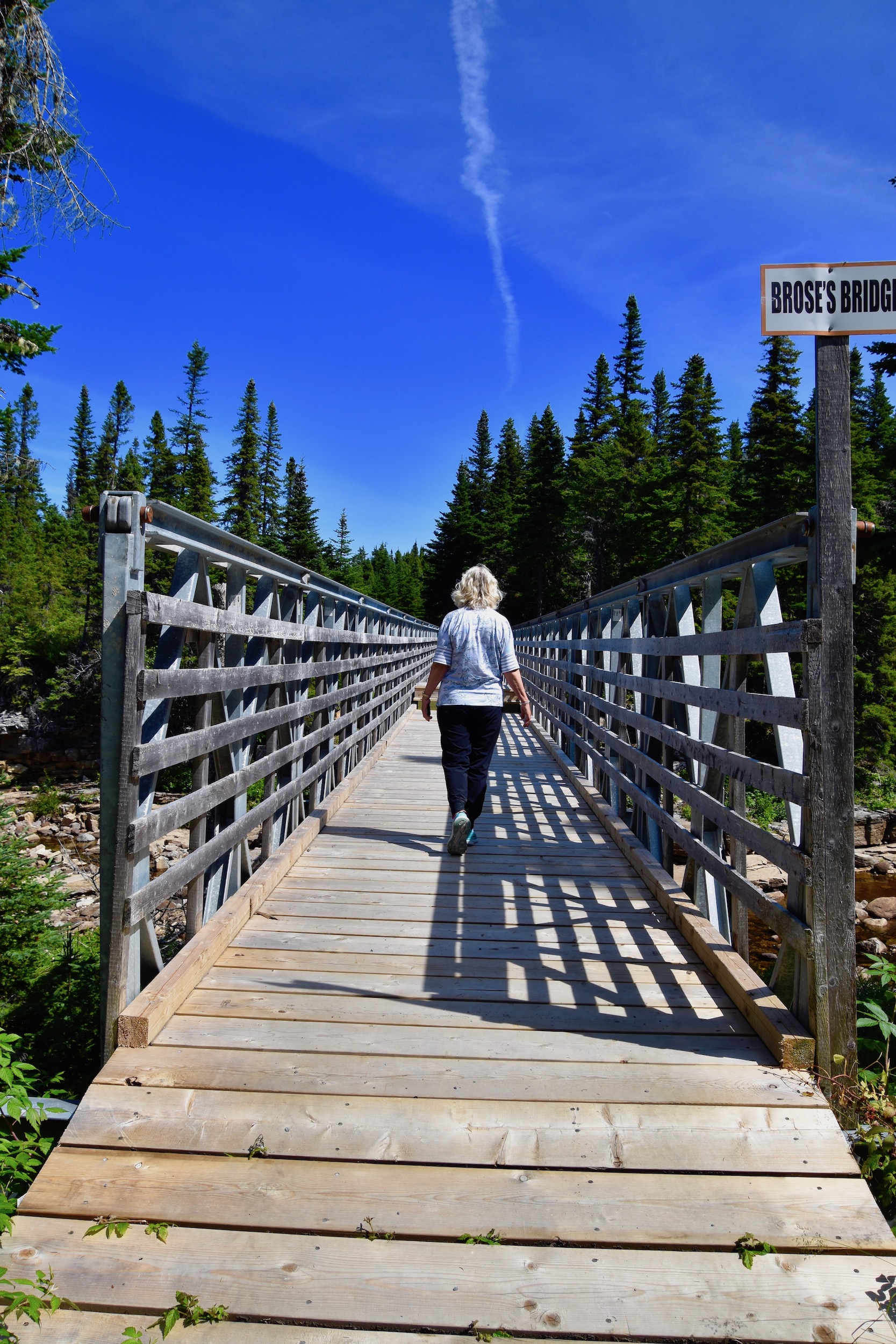
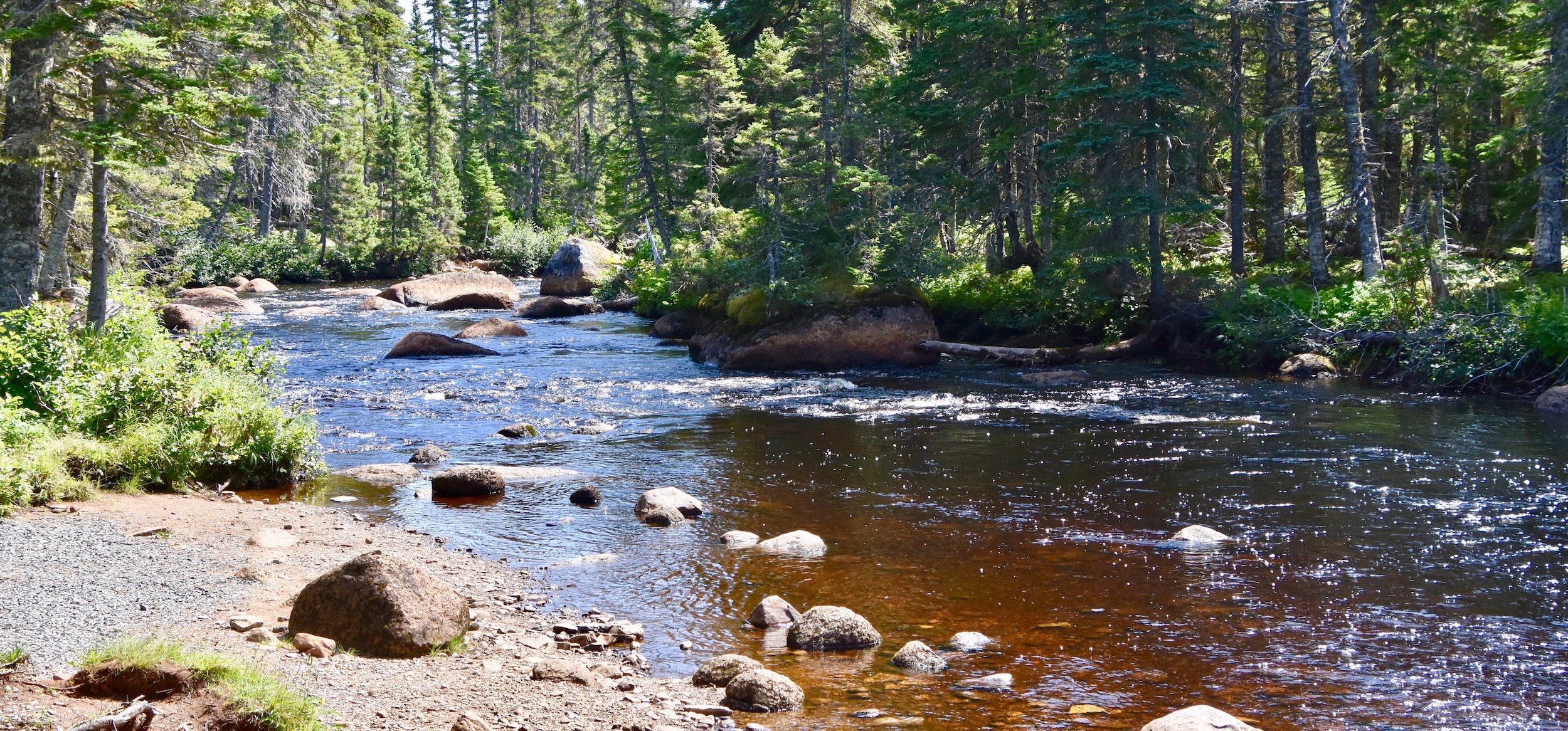
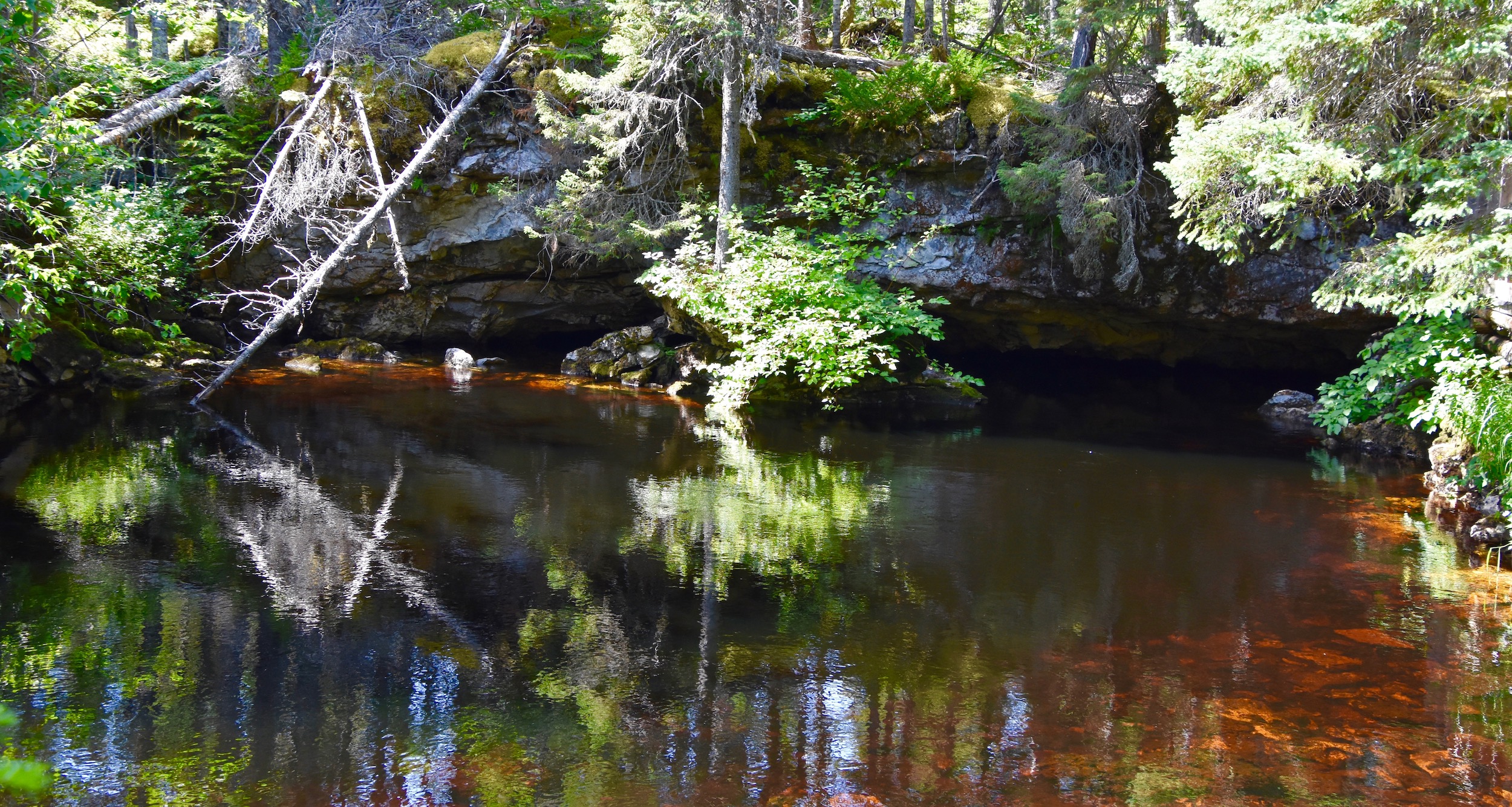
I expected that Beaver Brook would remerge in a short distance, but it does not and for how long it follows this underground passage I do not know. There are tables beside Beaver Brook which makes for an ideal picnic spot. There is also a very good chance of seeing migrating Atlantic salmon as we did. It was amazing to see these huge fish so close up in an apparently very healthy river system, considering that almost everywhere else outside Newfoundland and Labrador they are seriously endangered.
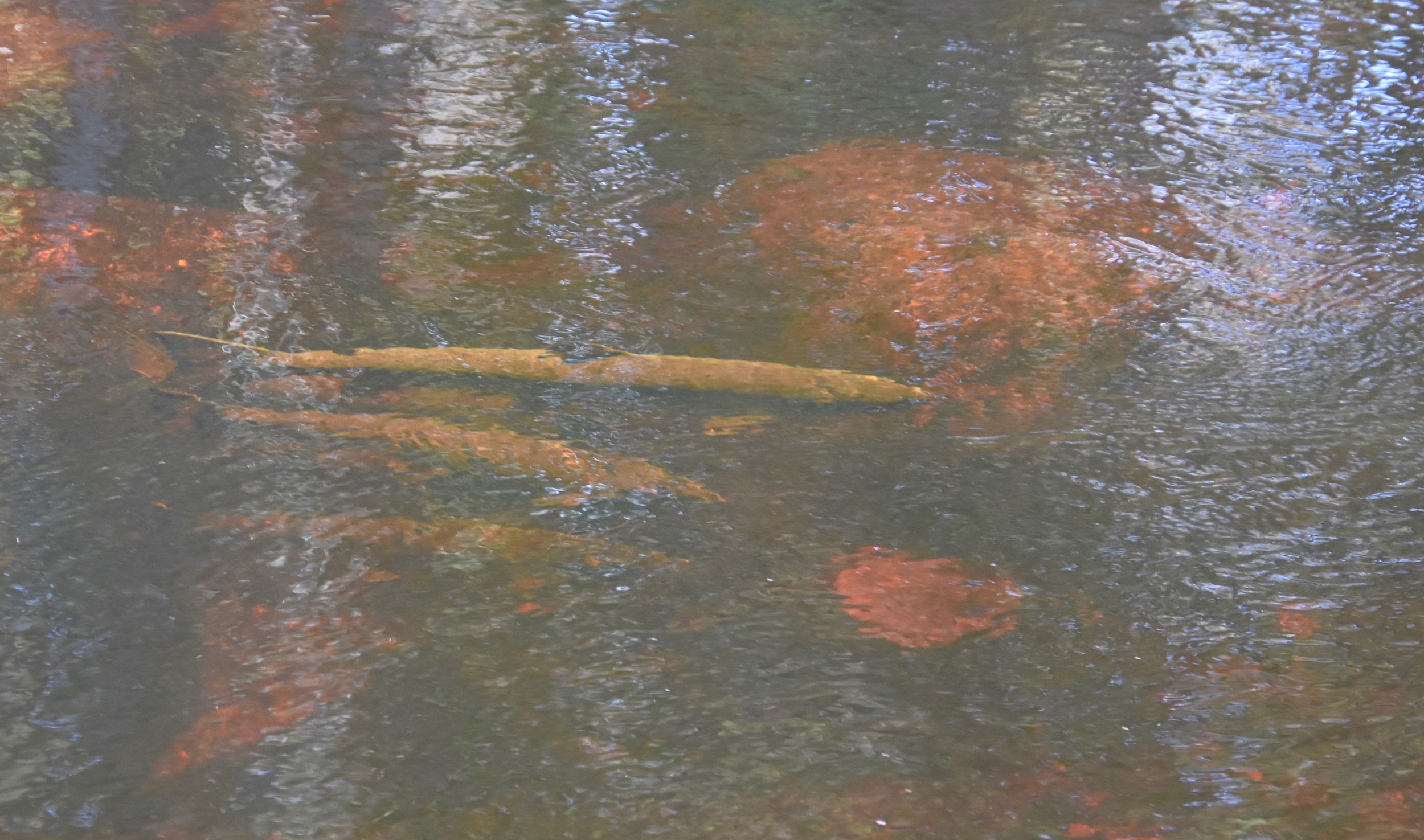
The Road to Conche
Back on the road to Roddickton you make a left turn onto Route 434 which dead ends at Conche some 24 kms. (15 miles) away. A short portion was not paved, but mostly it is a very good road. Just before reaching Conche there is a short set of stairs that leads up to a panoramic view of Conche and the French Shore which is as good as any we saw on this trip.
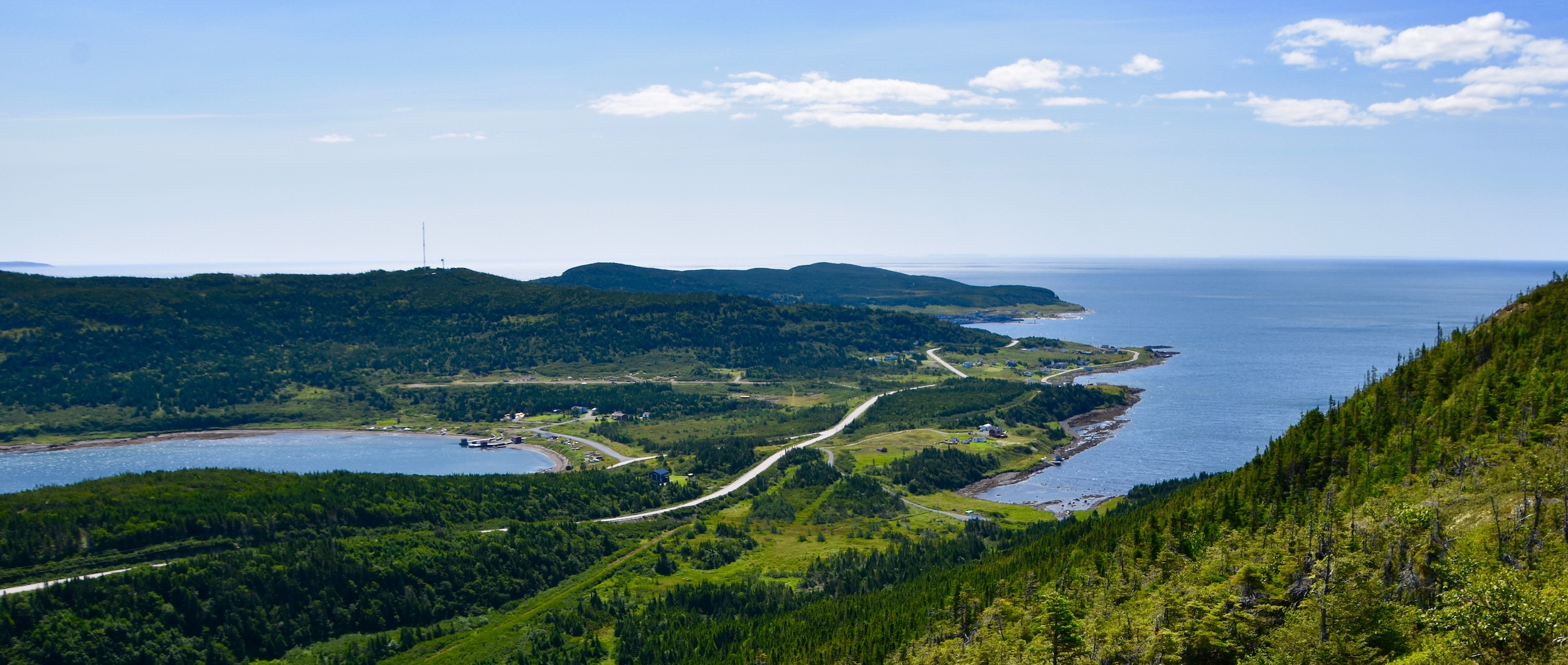
Here is a sort video I shot from the lookoff.
From the lookoff there is a steep descent down to sea level and the community of Conche where you can’t miss the old Grenfell Mission building that now houses the French Shore Interpretive Centre.
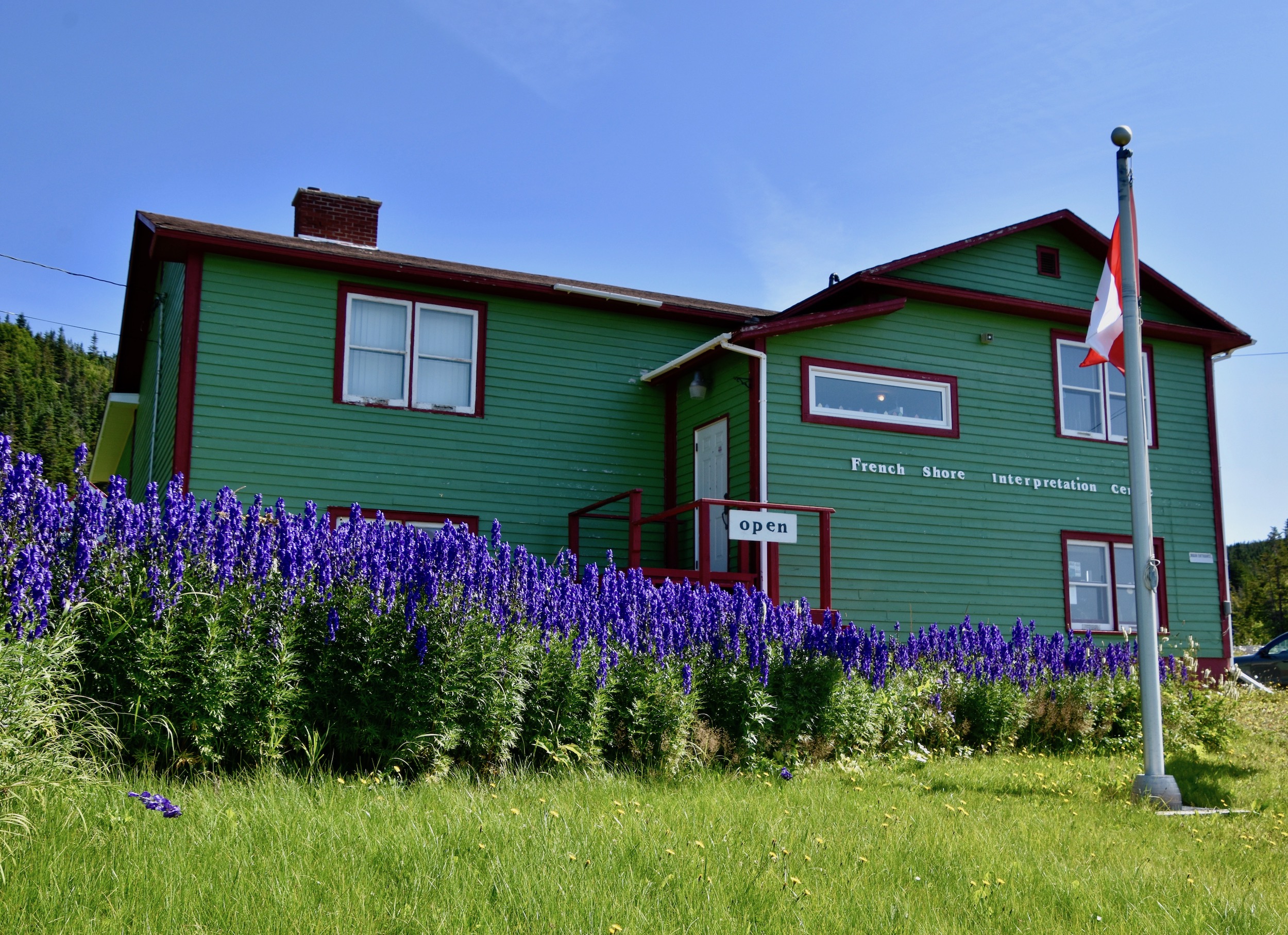
Inside you will find exhibits related to the history of the French Shore including this statue of a cabin boy.
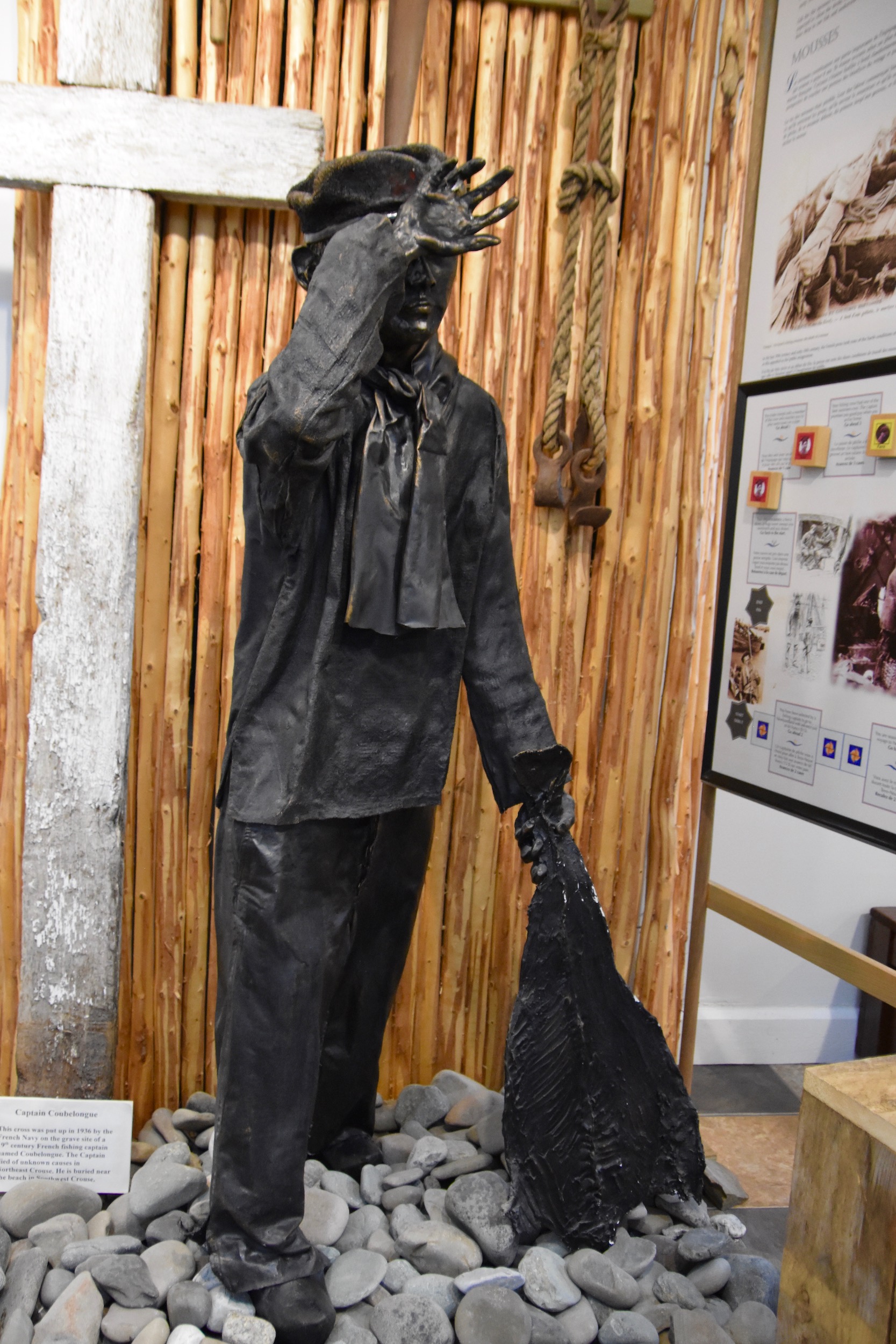
There are also a number of the burlap and fishing rope rugs that the Grenfell Missions were justly famous for producing and that are highly sought after by collectors today.
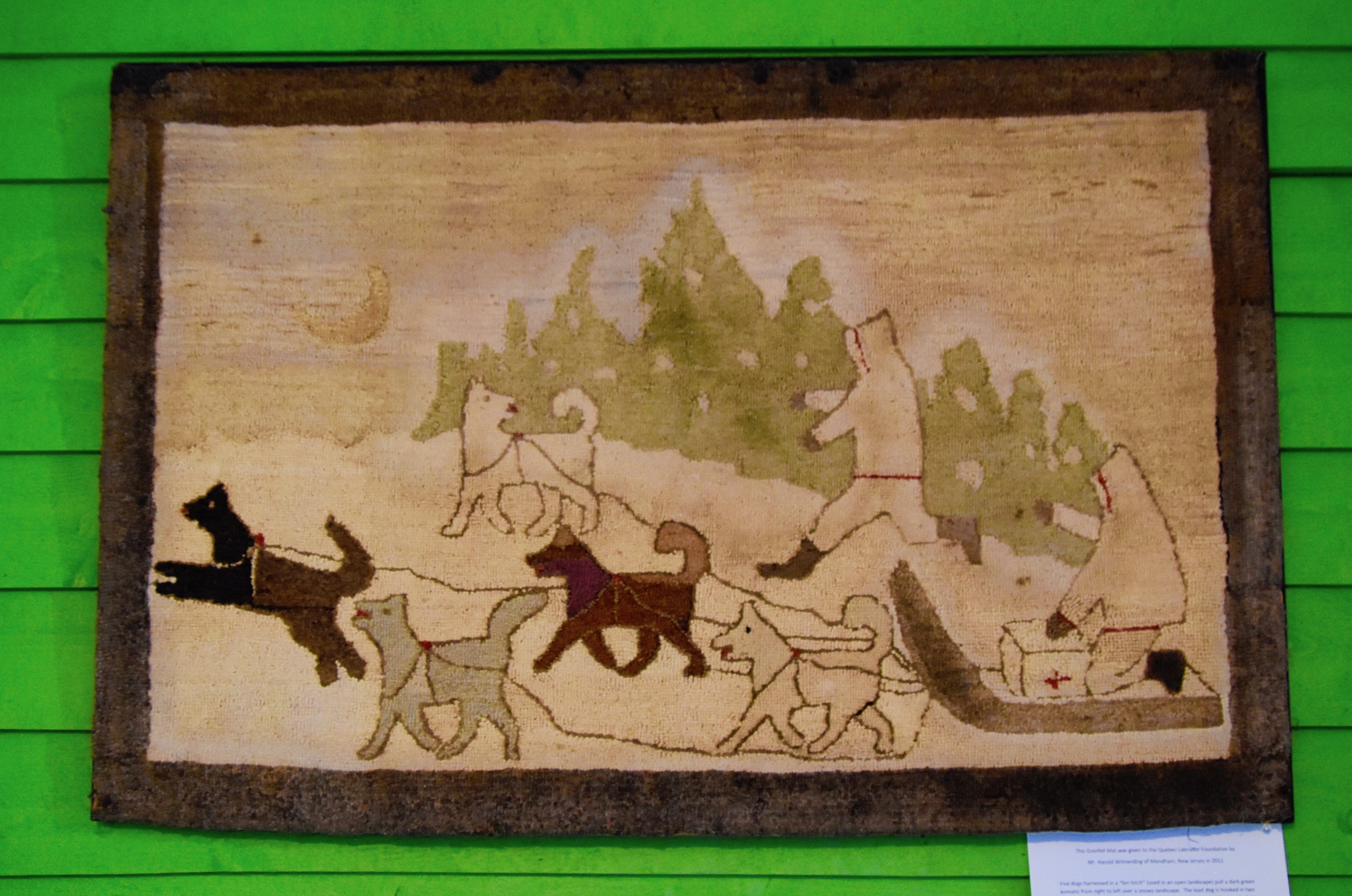
However, there can be no doubt that the star attraction is the French Shore Tapestry which occupies a good portion of the Interpretive Centre.
The French Shore Tapestry
The French Shore Tapestry was the brainchild of artist Jean Claude Roy, a native of France and his wife, Christina who is a native Newfoundlander. They split their time between France and Newfoundland. As a Frenchman, Roy was quite familiar with the famous Bayeaux Tapestry that depicts the conquest of England by the Normans in 1066 under William the Conqueror. He came up with the idea of creating something similar that would depict the history of the French Shore of Newfoundland. Hold on, creating something as large and magnificent as the Bayeaux Tapestry in the tiny community of Conche, population 170. That sounds just plain nuts, except it wasn’t.
Embroidery has always been an important past time on the French Shore and Roy had no problem convincing local women to sign onto the project, perhaps not realizing the magnitude of the task they were undertaking. With Roy designing the tapestry, his wife in charge of getting the history down and over 20,000 hours of stitching, the tapestry was finished in 2010.
I’ve visited the Bayeaux Tapestry in the lovely little city of Bayeaux in Normandy, but it’s not remotely like the experience of seeing the French Shore Tapestry in Conche. The Bayeaux Tapestry is so popular that you have to get on a moving sidewalk to see it, which means no lingering over details. Also, although well restored, the Bayeaux Tapestry is almost a thousand years old and shows its age. The French Shore Tapestry is bright and vibrant and chances are good you might be the only one there to see it.
This is what you see as you enter the room where the tapestry winds its way for 66 metres (216 feet) around the room. It is breathtaking.

Because of the need for proper lighting and the fact the tapestry is protected by plexiglass, unless you are a professional photographer, which I’m not, it won’t be easy to get good pictures. You are allowed non-flash photography and below is a small sample of some of the panels.
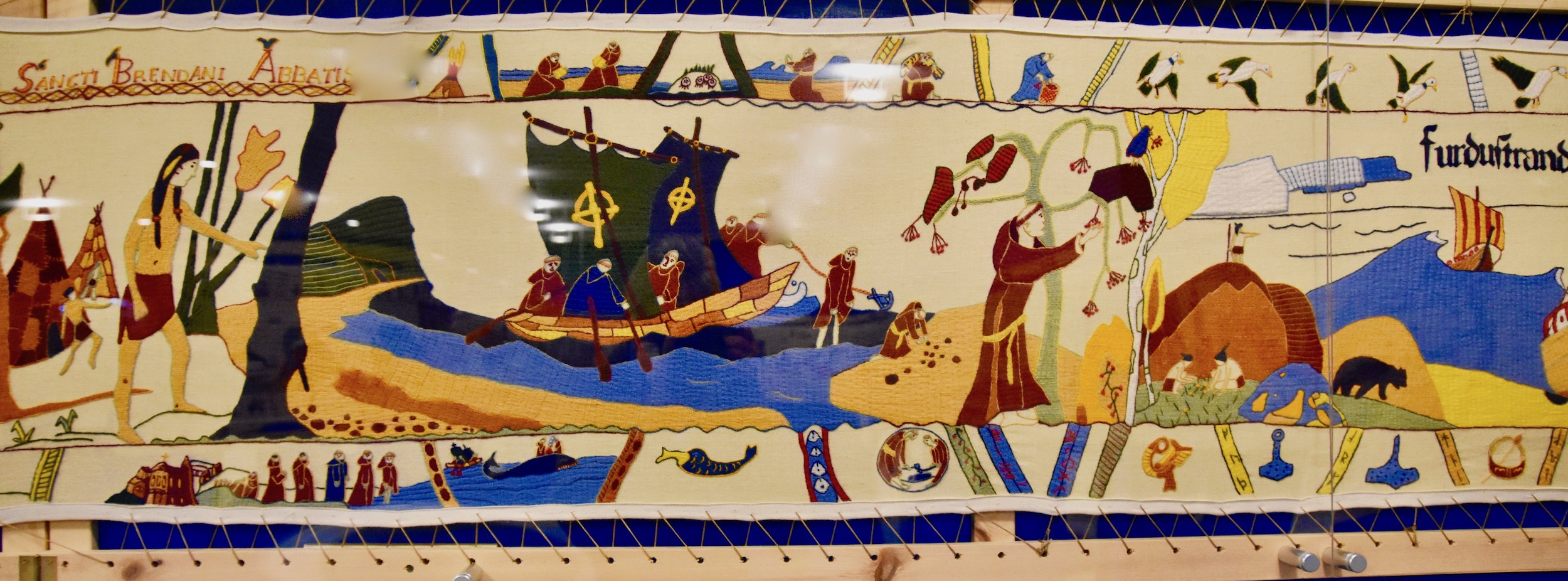
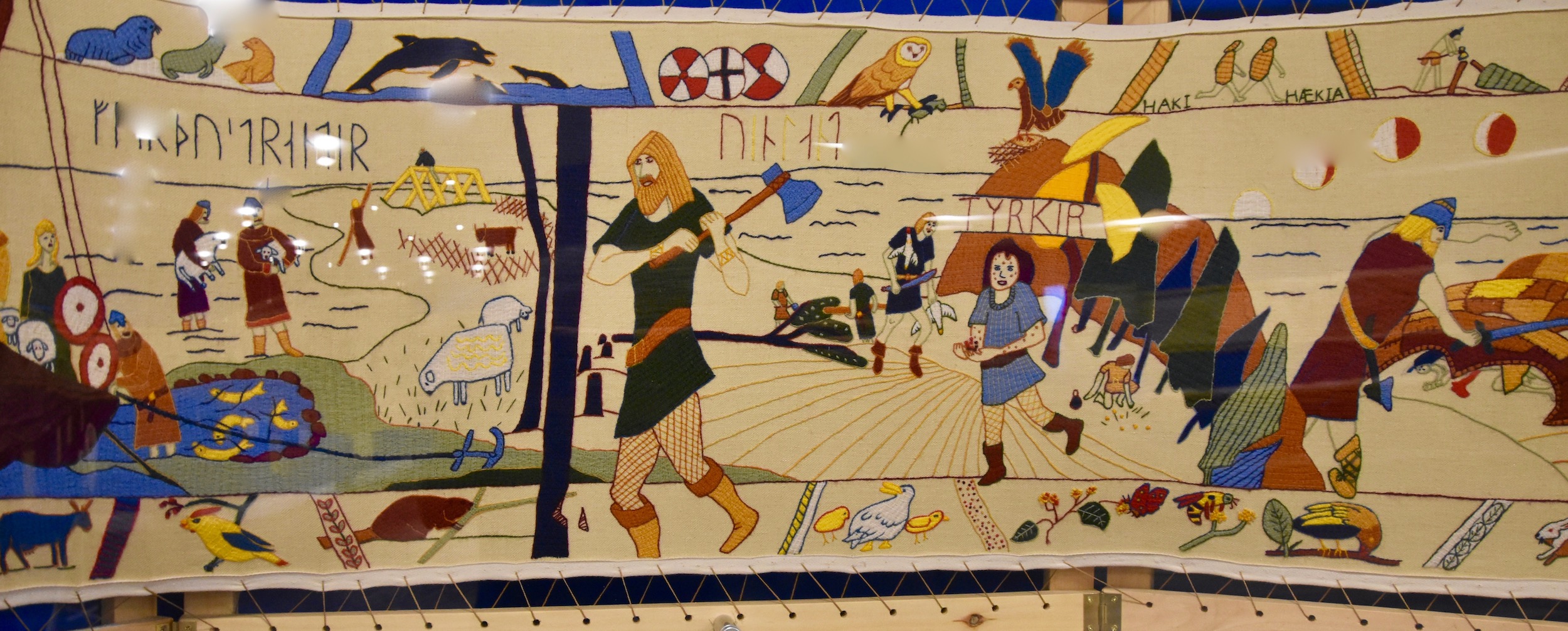
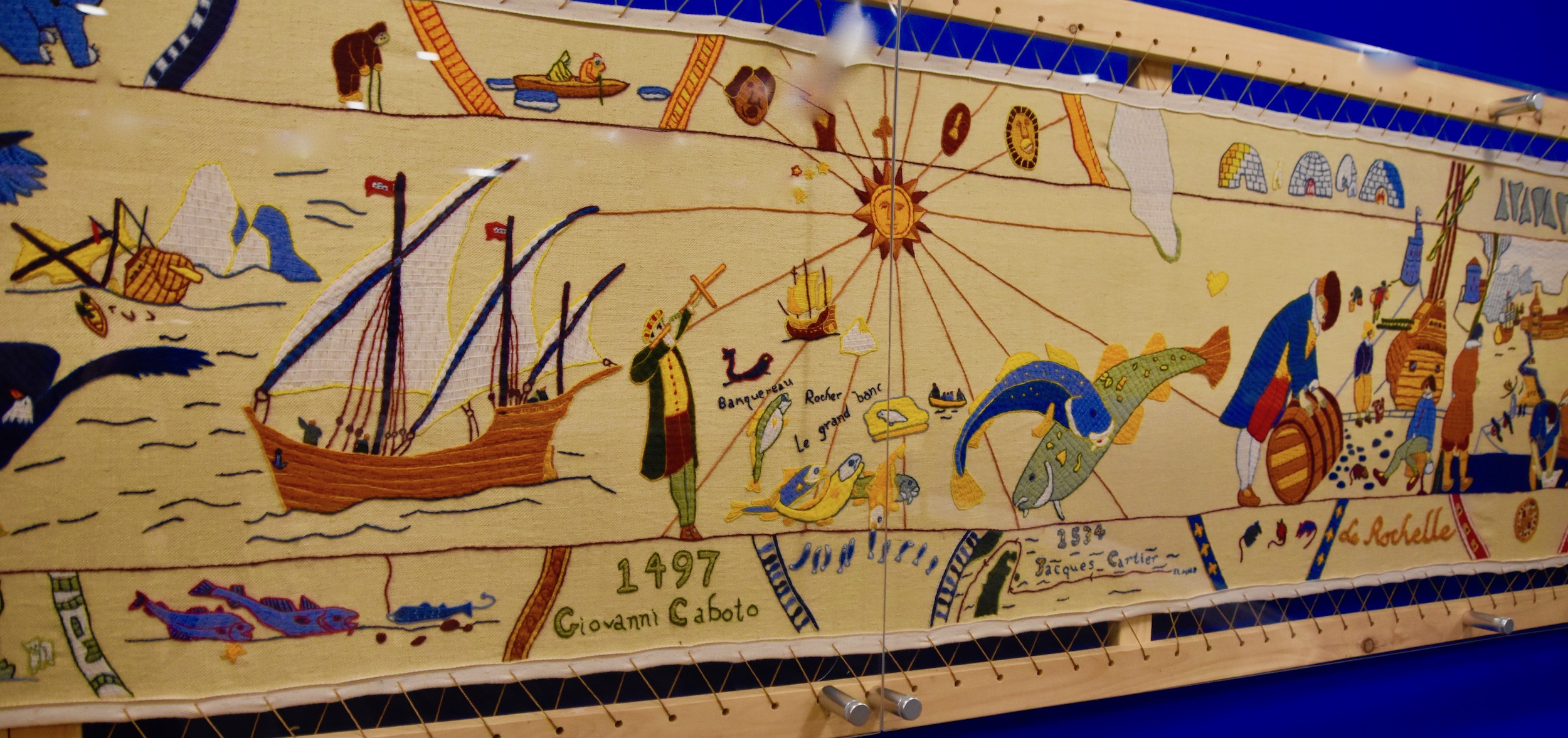
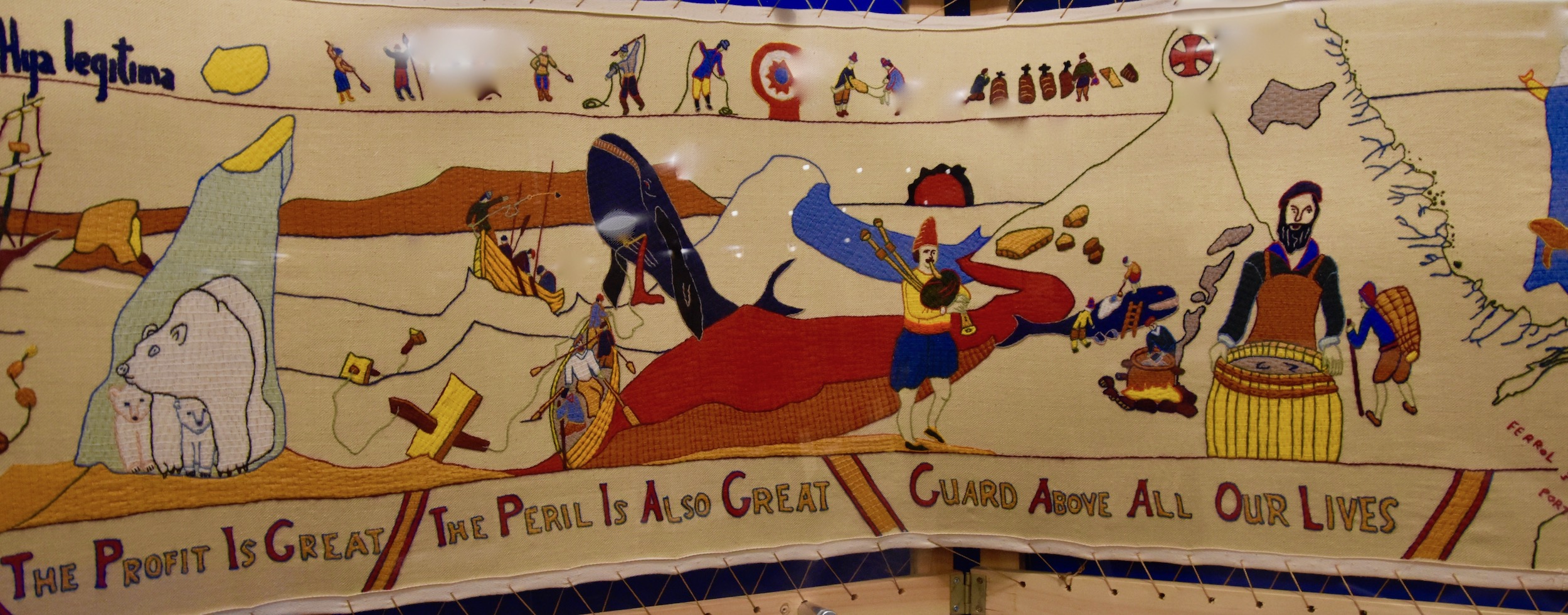
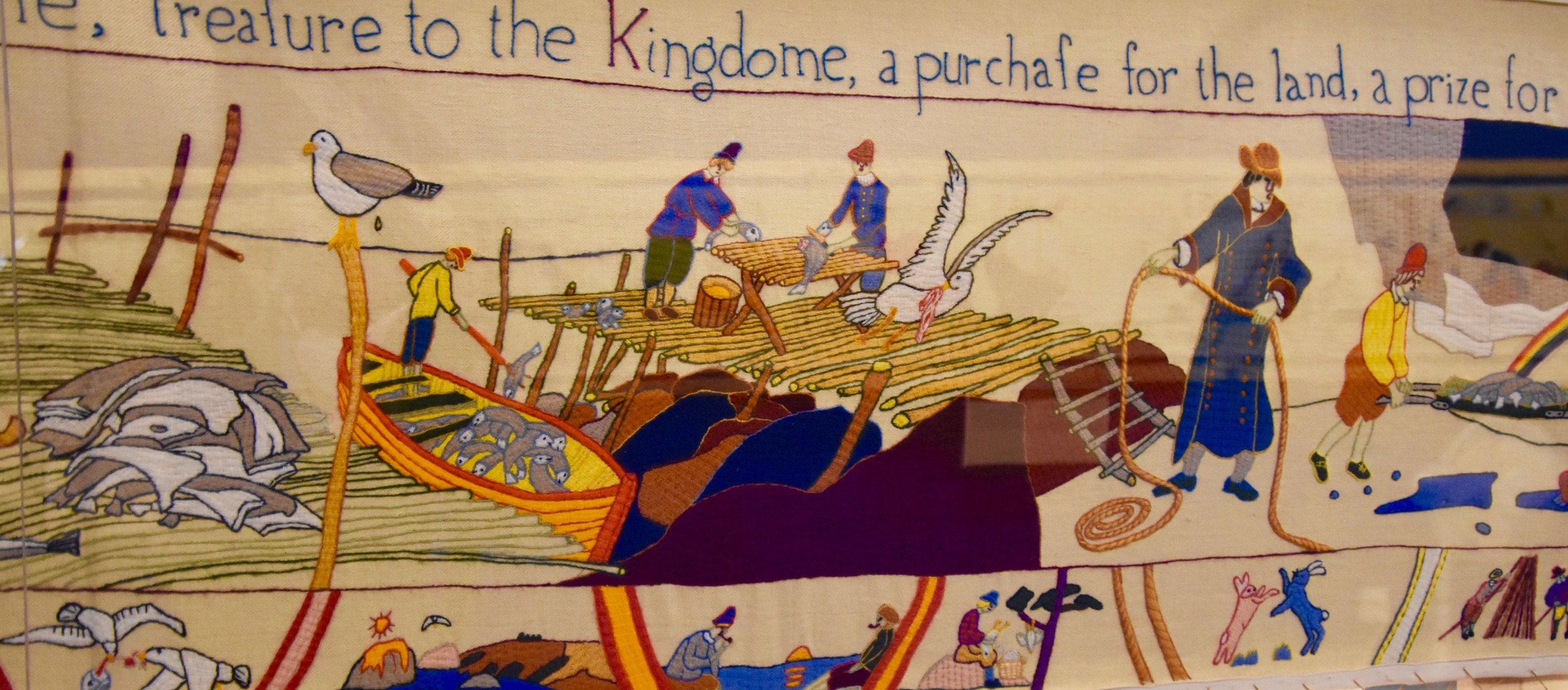
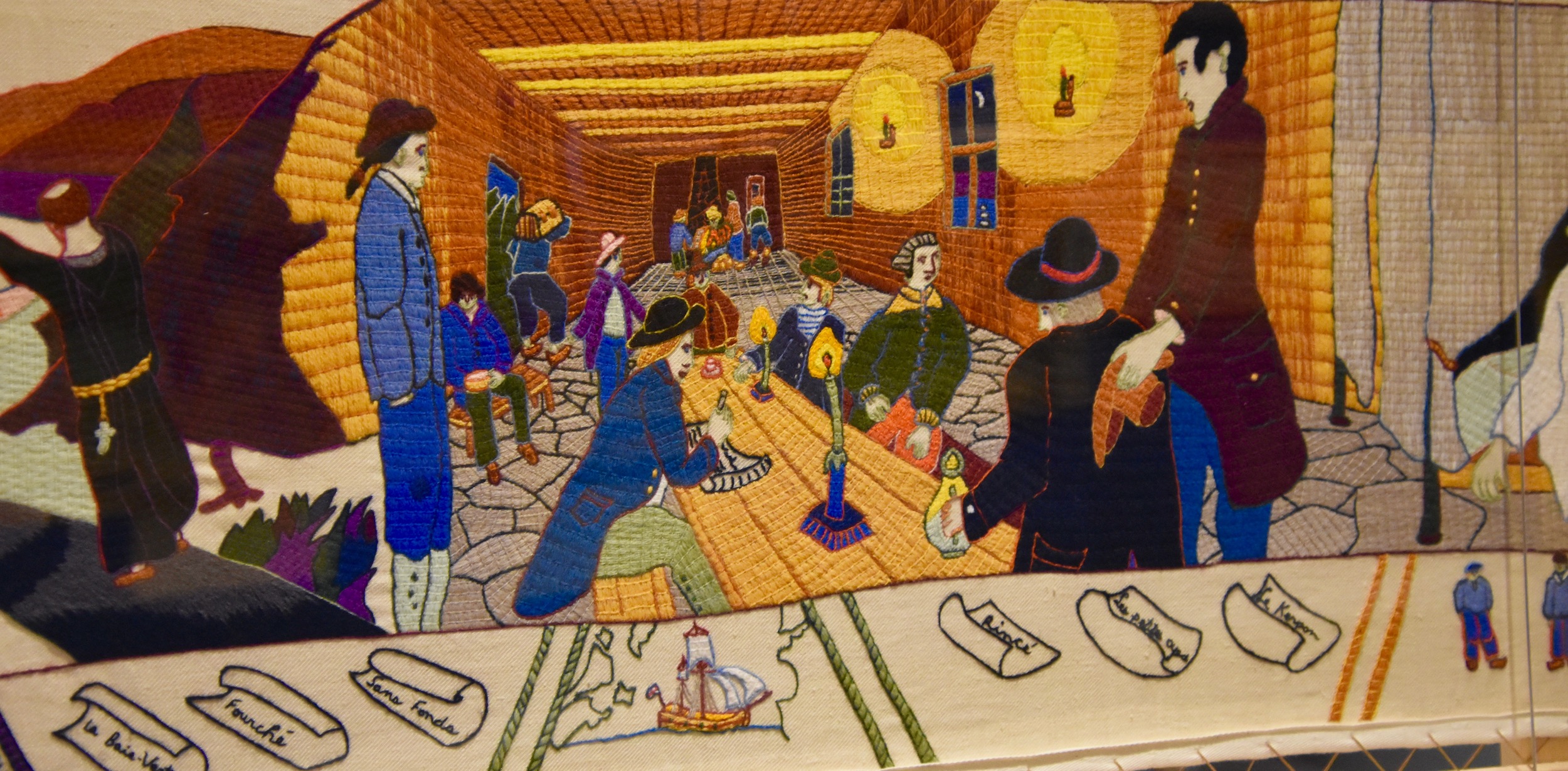
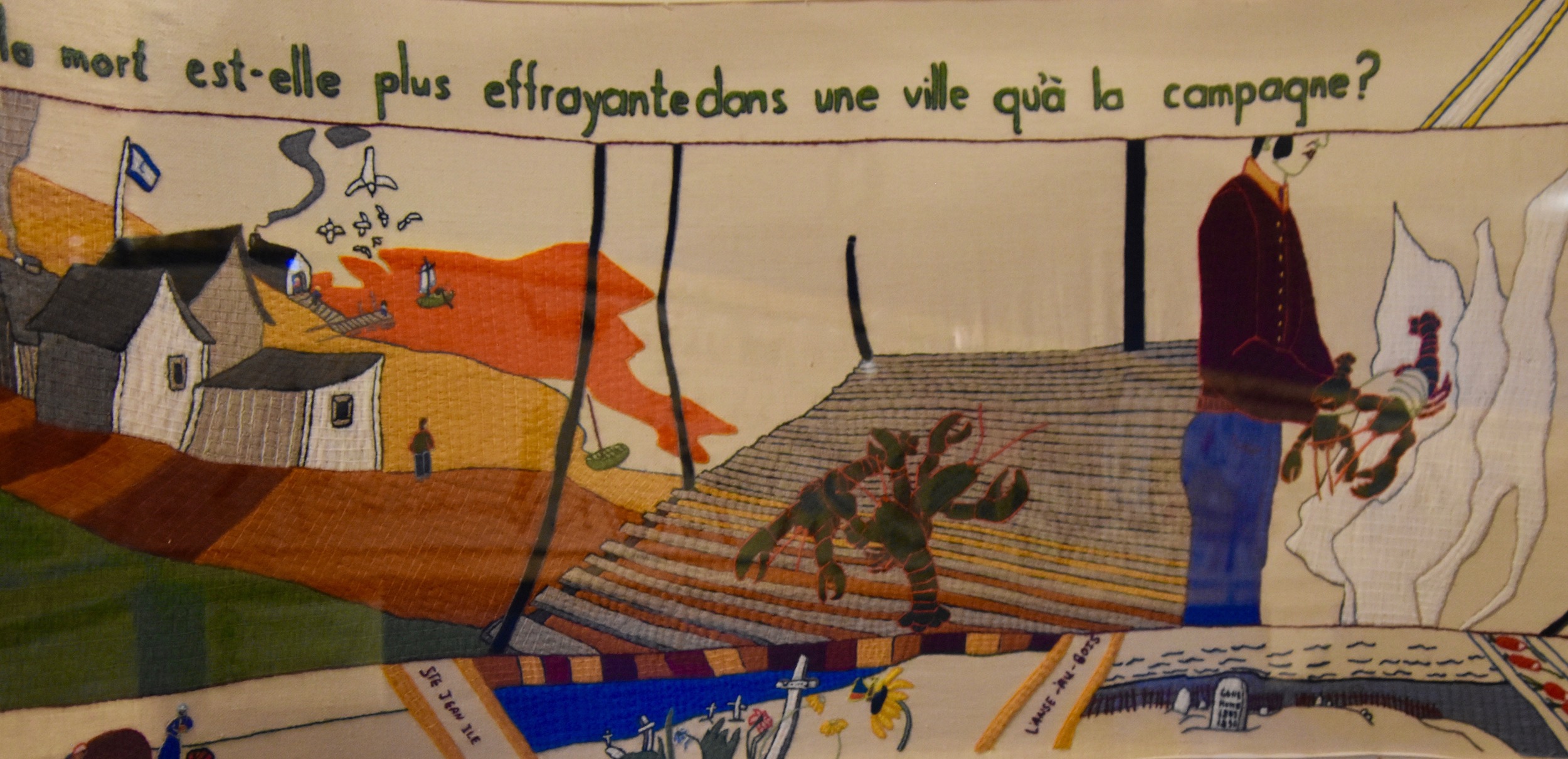
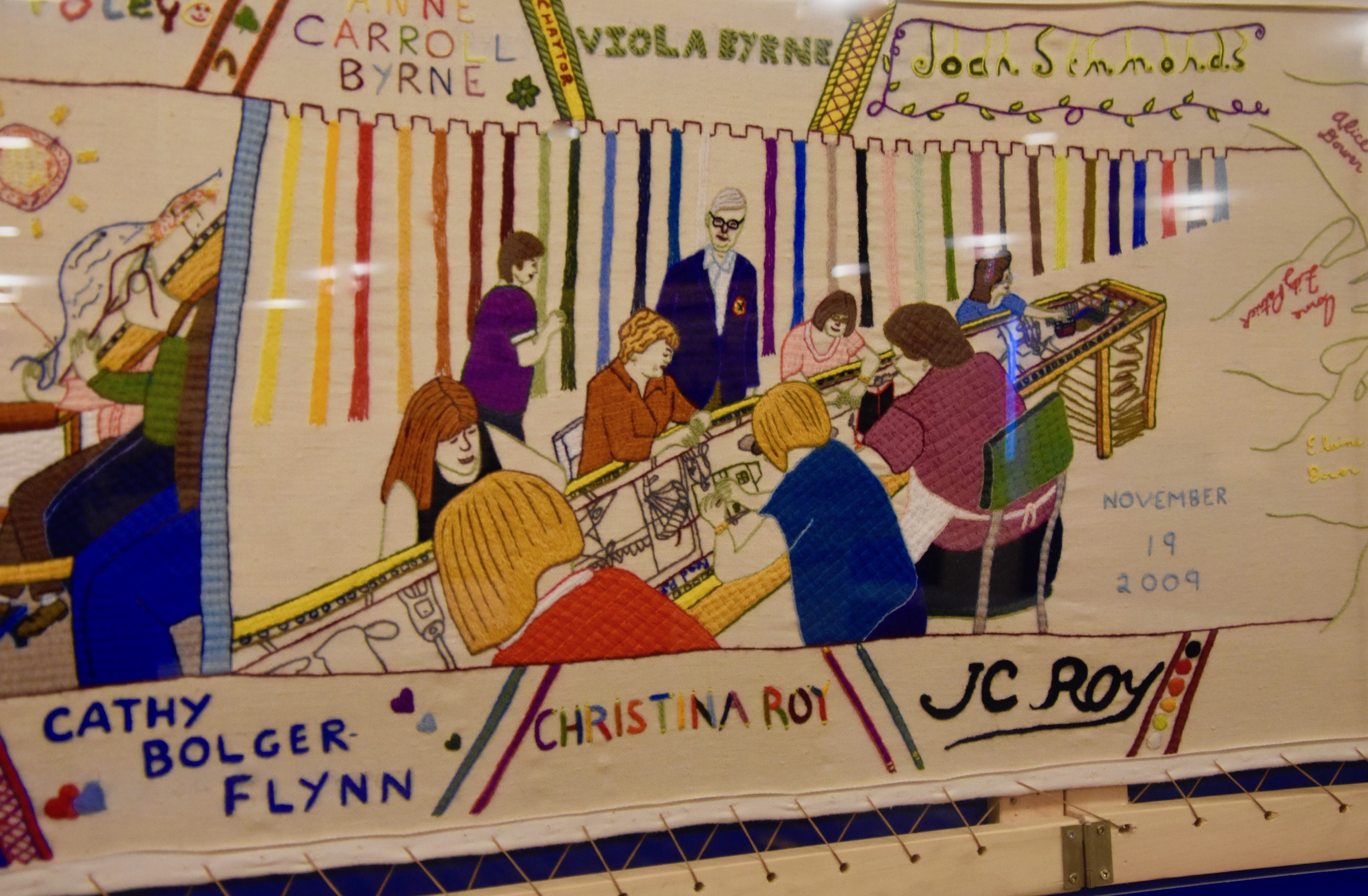
We saw many amazing things during our two weeks in Newfoundland and Labrador and the French Shore Tapestry was right up there with the best. It is more than worth the effort to make the detour to Conche to see this wonderful piece of art.
This concludes my series on Newfoundland and Labrador 2021. Alison and I hope to return in 2022 to continue our exploration of this amazing province.

